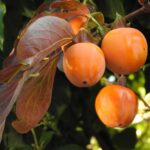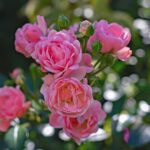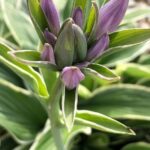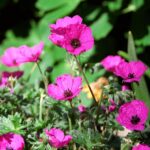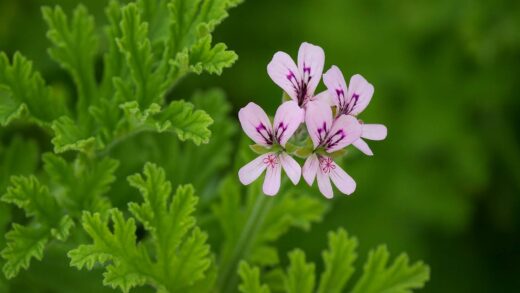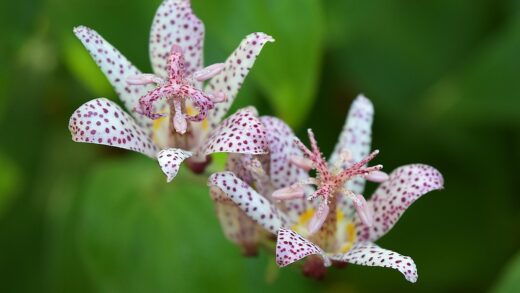The Gerbera, this vibrant-flowered plant Erfolg originating from South Africa, is deservedly popular among both gardening enthusiasts and florists. Its radiant appearance, with flower heads shining in almost every shade of the rainbow, brings cheerfulness to our homes and gardens alike. However, for this beauty to provide long-lasting joy, knowledge and application of proper care are essential. In this article, we will thoroughly explore all the intricacies of Gerbera cultivation so that everyone can successfully care for this fascinating plant and marvel at its incomparable flowers.
Gerbera varieties and brief history
The world of Gerberas is incredibly diverse; we encounter countless cultivated varieties that differ in size, flower shape, and color. There are very small, dwarf versions that look wonderful grown in pots, and larger varieties that also hold their own as cut flowers. The flowers can be single, semi-double, or double, and the color spectrum ranges from white, through yellow, orange, pink, to deep red and purple. It is important to mention that breeders are constantly creating new hybrids with even more special properties, so the selection expands year by year.
The Gerbera genus was originally named after Traugott Gerber, a German botanist and naturalist who lived and worked in the 18th century. The exact time of the plant’s discovery and its introduction to Europe is somewhat unclear, but by the end of the 19th century, it had become known in horticultural circles. However, it gained true popularity in the 20th century when breeding work accelerated, and more varieties appeared that were more resistant to diseases, better suited for cultivation, and more visually appealing. Today, the Gerbera has become one of the world’s most beloved and widely cultivated ornamental plants, thanks to its versatility and aesthetic value.
The vast majority of Gerberas available commercially are hybrids (Gerbera x hybrida) resulting from crosses between Gerbera jamesonii and other wild species. These hybrids combine the best traits of the parent species, such as large, brightly colored flowers, a long blooming period, and better disease resistance. During breeding, special attention is paid to the strength of the flower stem, which is particularly important for its use as a cut flower. Thus, today’s modern Gerbera varieties are much more durable and easier to handle than their wild ancestors.
When choosing a Gerbera, it is worth considering the purpose for which we want to use it. If it will be a potted plant adorning our home, compact-growing varieties with abundant flowers may be ideal. If we want to admire its beauty as a cut flower, then we should look for varieties with long, strong stems and durable flowers. Knowing the differences between varieties helps us choose the most suitable plant for our needs, one that will bring joy for a long time.
More articles on this topic
Light requirements and ideal placement
The Gerbera is a plant with high light requirements that rewards abundant sunlight. To flower profusely and develop healthily, it needs at least six hours of direct sunlight daily. Therefore, for indoor cultivation, choose the brightest windowsill, such as a south or west-facing window. If it does not receive enough natural light, the plant’s shoots may become leggy, its leaves paler, and flowering may be absent or sparse. Supplemental plant lighting can also be considered during the winter months, which are poorer in light.
For outdoor cultivation, also look for a sunny spot, but one that is slightly protected from the scorching midday sun, especially on hot summer days. Although it loves heat and light, excessively strong, burning sun can damage its leaves and flowers. A location where it receives full sun in the morning and some shade in the afternoon can be ideal for it. Good air circulation is also important, but avoid drafty places, as the Gerbera does not like them either.
Proper placement is not just about light conditions but about the entirety of environmental factors. Ensure the plant is not exposed to sudden temperature fluctuations. For example, do not place it in the immediate vicinity of a radiator or in a place where windows or doors are frequently opened during cold months. A stable, balanced environment contributes to the healthy development and abundant flowering of Gerberas.
If you move the Gerbera outdoors to the garden or terrace in summer, acclimate it gradually to the changed conditions. In the first few days, place it in a shadier spot for only a few hours, then gradually increase the time spent in the sun day by day. This helps prevent leaf burn and plant stress. Follow the same procedure in the autumn when bringing it back indoors as cooler weather arrives.
More articles on this topic
The art of watering
Watering Gerberas is a crucial element of successful care; a balance must be found between overwatering and allowing them to dry out. The plant likes moist but not waterlogged soil. Before watering, always check the moisture content of the top layer of soil. If it feels dry to the touch about 1-2 cm deep, it is time to water. It is important for the water to thoroughly permeate the root ball and for the excess to drain out through the drainage holes at the bottom of the pot.
For watering, preferably use room-temperature, soft water, such as rainwater or tap water that has been allowed to sit. Water that is too cold can shock the roots. Ensure that when watering, the water goes directly onto the soil and not onto the plant’s leaves or into the center of the leaf rosette, as this can lead to the development of fungal diseases. Water stagnating in the center of the leaves is particularly conducive to crown rot, one of the most common Gerbera problems.
During the growing season, from spring to autumn, when the plant is actively growing and flowering, it needs more frequent watering. In the summer heat, a daily watering might even be necessary, especially if the plant is in a sunny location. In winter, during the dormant period, reduce the frequency and amount of watering. Allow the soil to dry out একটু more between waterings, but ensure the root ball never dries out completely.
Overwatering is one of the Gerbera’s greatest enemies, as it can lead to root rot. Signs of this can include yellowing, wilting leaves, a soft, browning crown, and unpleasantly odorous soil. If you notice such symptoms, immediately reduce watering and, if necessary, repot the plant in fresh, well-draining soil, removing any rotted root parts. For prevention, always ensure there are drainage holes at the bottom of the pot and regularly empty any excess water from the saucertochy under the pot.
Soil requirements and choosing the potting medium
For the Gerbera, good quality soil with a loose structure and excellent drainage capacity is essential. Its roots are sensitive to standing water, so a medium must be provided that does not compact and allows for the rapid drainage of excess water. Slightly acidic or neutral soil, with a pH between 5.5 and 6.5, is ideal for it. It does not like overly calcareous soil; in such a medium, nutrient uptake problems can occur.
Commercially available, good quality potting mixes developed for flowering plants generally meet the needs of Gerberas. These can be further improved by adding a little sand, perlite, or small-grained clay pebbles to achieve even better drainage and soil aeration. It is important that the chosen potting medium is rich in nutrients but does not contain too much fresh, undecomposed organic matter, which could encourage the proliferation of pathogens.
If you want to prepare your own soil mix, a good base can be garden peat, composted manure, or mature compost mixed with sand. A possible ratio is: two parts peat, one part compost, and one part sand or perlite. The key is that the final result should be an airy, crumbly-structured medium that retains moisture well but does not become waterlogged. When planting, ensure that the plant’s crown (leaf rosette) is not below the soil surface, as this can also lead to rot.
When choosing a planting pot, also keep good drainage in mind. Definitely choose a pot that has several drainage holes at the bottom. Using a clay pot may be more advantageous than a plastic one, as its more porous material helps with soil aeration and the evaporation of excess moisture. The size of the pot should be proportional to the size of the plant; do not plant it in a pot that is too large, as this can also lead to excessive soil moisture.
Nutrient supply and fertilization
The Gerbera, especially during its flowering period, is quite a nutrient-demanding plant. For abundant and long-lasting flowering, it needs a regular supply of nutrients. During the growing season, from spring to autumn, it is advisable to give it a balanced liquid fertilizer developed for flowering plants every two to three weeks, along with the watering. Choose a fertilizer that also contains micronutrients, especially iron and manganese, as their deficiency can cause yellowing of the leaves.
It is important to always apply fertilizer to moist soil, never give fertilizer to completely dry soil, as this can damage the roots. Do not exceed the concentration recommended by the manufacturer; in fact, it is better to prepare a slightly more diluted solution to avoid the danger of over-fertilization. Excessive nutrient intake can be at least as harmful as a deficiency; it can cause leaf burn, root damage, and inhibit flower formation.
During the winter months, when the plant’s growth slows down and it is in its dormant period, suspend fertilization or apply nutrients at most once a month, in a very diluted form. Excessive nutrient intake during the dormant period can disrupt the plant’s natural cycle and weaken it. In spring, when growth resumes, gradually restart regular fertilization.
Alternatively, slow-release fertilizer granules can also be used, which, when mixed into the potting medium, provide the necessary nutrients gradually over a longer period. This can be particularly useful if you tend to forget regular fertilization. However, in this case too, pay attention to the correct dosage and choose a product specifically designed for potted flowering plants. Organic fertilizers, such as compost tea, can also have a good effect on Gerberas, but these should also be used 외부 in moderation.
Optimal temperature and humidity
The Gerbera prefers a warm, but not excessively hot, environment. The ideal daytime temperature for it is between 20-25°C (68-77°F), and at night, it can be slightly cooler, 15-18°C (59-64°F). It is important to avoid sudden temperature fluctuations, as these can cause stress to the plant and negatively affect flowering. Temperatures below 10°C (50°F) can already be harmful to it, so during colder months, it must definitely be kept in a frost-free place.
Regarding humidity, the Gerbera prefers a moderately humid environment, with a relative humidity of around 40-60% being ideal. Excessively dry air, especially during the heating season indoors, can cause problems; the edges of the leaves may turn brown, and the plant may become more susceptible to pests, such as spider mites. There are several methods to increase humidity, such as placing a tray filled with water and pebbles next to the plant, or regular but careful misting.
When misting, ensure you use a fine spray of water and do not spray directly onto the flowers or into the center of the leaf rosette to avoid fungal growth. Misting in the morning hours is most beneficial so that the leaves have time to dry by evening. Plants kept in groups can also help increase the humidity of the local microclimate, as plants transpire.
In winter, in heated rooms, it is particularly important to pay attention to providing adequate humidity. If the air is very dry, purchasing an electric humidifier may also be considered, especially if you keep several moisture-loving plants. Providing a stable, draft-free environment with appropriate temperature and humidity for the Gerbera contributes to its healthy development and the maintenance of continuous Cvetna splendor.
Pruning and deadheading spent flowers
Pruning Gerberas generally does not require complicated procedures, mainly being limited to the removal of spent flowers and old, damaged, or diseased leaves. Regular removal of spent flower stalks, also known as “deadheading,” is extremely important. This is not only aesthetically beneficial but also stimulates the plant to develop new flowers by preventing it from wasting energy on seed production. Remove the spent flower stalk right from the base with a gentle twisting motion or with sharp, clean scissors.
It is also advisable to regularly remove the lower, yellowing, or dried leaves. These leaves no longer photosynthesize efficiently and can provide a breeding ground for fungal diseases or pests. When removing leaves, also ensure that the cut surface is clean and that you do not damage the healthy parts of the plant. Always use sterilized pruning shears or a knife to prevent the transmission of pathogens.
Sometimes, a Gerbera may become too dense, with the leaves слишком crowded. In such cases, thinning can be performed by removing some inner leaves to improve air circulation in the center of the plant. This helps prevent the development of fungal diseases and ensures that light reaches all leaves. However, perform this operation carefully; do not remove too many leaves at once, as this can weaken the plant.
Always remove plant debris resulting from pruning from the pot and its surroundings, as decomposing plant parts can also attract pests and diseases. Regular cleaning and removal of dead parts contribute to maintaining the Gerbera’s health and its aesthetic appearance. This care is rewarded with the plant’s continuous flowering and vitality.
Gerbera propagation methods
Gerberas are most commonly propagated by seed and by division, although in the case of hybrid varieties, plants grown from seed do not always retain the parental characteristics. Seed propagation is more appropriate for pure-line varieties or those specifically intended for seed propagation, or it is used by breeders when creating new hybrids. The germination capacity of fresh Gerbera seeds is relatively good, but it deteriorates quickly, so it is advisable to sow them as soon as possible. Use a loose, well-draining seedling mix for sowing.
Cover the seeds only thinly with soil, or press them lightly onto the soil surface, as they germinate in light. Germination requires a temperature of around 20-25°C (68-77°F) and a continuously moist medium. After the seedlings emerge, provide them with sufficient light, and when they are strong enough, carefully transplant them into separate pots. Gerberas grown from seed usually begin to flower from the second year. This method requires patience, but it can be exciting to grow your own plants from the beginning.
Division is a much more common and simpler method of Gerbera propagation, especially for potted plants. The most suitable time for this is spring, when the plant enters its active growth phase, or in conjunction with repotting. Carefully lift the plant out of its pot and shake off excess soil from the roots. With a sharp, sterile knife or by hand, carefully separate the clump into several parts, ensuring that each part has enough roots and at least one or two growing points (shoots).
Plant the newly obtained divisions in fresh, good-quality potting soil and, for the first few weeks, keep them in a slightly more humid environment, protected from direct sunlight, until they strengthen. Be careful with watering; do not overwater the freshly planted divisions. Division is not only suitable for propagation but also for rejuvenating overgrown, old clumps. This method can ensure that your favorite Gerbera continues to adorn your home year after year, renewed.
Common pests and diseases
Unfortunately, Gerberas, like many other ornamental plants, can be attacked by various pests and diseases. Among the most common pests are aphids, spider mites, thrips, and whiteflies. Aphids usually infest young shoots and buds, weakening the plant by sucking its sap and potentially causing deformities. Spider mites mainly appear in dry, warm environments, forming fine webs on the undersides of leaves and causing yellowing and bronzing of the foliage.
Thrips are tiny, flying insects that also damage leaves and flowers, leaving behind silvery spots and distortions. Whiteflies settle on the undersides of leaves and excrete honeydew, which can lead to secondary fungal infections, such as sooty mold. Pests can be controlled with insecticides, but for milder infestations, more natural methods like washing with potassium soap solution or using neem oil can also be effective. Regular inspection is important to detect problems early.
Among diseases, the most significant are fungal infections such as grey mold (Botrytis), powdery mildew, and crown rot. Grey mold appears in damp, humid conditions, forming a grey, powdery coating on plant parts, especially on spent flowers and damaged leaves. Powdery mildew causes a whitish, flour-like coating on the leaves. Crown rot, as mentioned earlier, is a consequence of overwatering and poor drainage and can lead to the plant’s demise.
To prevent diseases, it is important to ensure proper growing conditions: good air circulation, avoidance of overwatering, keeping leaves dry, and removal of dead plant parts. In case of fungal infections, the application of fungicides may be necessary. Always read the instructions for use of plant protection products carefully and follow the regulations. Healthy, strong plants are less susceptible to pests and diseases, so emphasis should be on prevention.
The necessity and process of repotting
Gerberas generally benefit from repotting every year or two, depending on how quickly they grow and fill their pot. The best time for repotting is in the spring, when the plant begins a new growth cycle. Signs that indicate the plant has outgrown its pot include roots emerging from the drainage holes at the bottom of the pot, the root ball drying out very quickly, or slowed growth despite receiving proper care.
For repotting, choose a pot that is one size larger than the previous one. It is important not to plant it in an overly large container, as this can lead to excessive soil moisture and root rot. Use fresh, high-quality, loose-structured potting soil specifically designed for flowering potted plants, or mix your own soil blend as described earlier. Ensure that the new pot also has adequate drainage holes at the bottom.
The repotting process involves carefully removing the Gerbera from its old pot. If the roots are very tangled, gently loosen them. Examine the root system and remove any dead, damaged, or rotten root parts with a clean, sharp tool. Place a layer of fresh soil at the bottom of the new pot, then position the plant so that the root crown (where the roots meet the stem) is at the same height as in the previous pot, or slightly higher, but never below the soil surface.
Fill the pot with fresh soil around the roots, tamping lightly to eliminate air pockets, but not too firmly, so the soil remains loose. After repotting, water the plant thoroughly so the soil is well moistened and the roots make contact with the new medium. For the first few weeks, keep the newly repotted Gerbera in a slightly shadier spot and avoid fertilizing until the roots have established and new growth begins.
Overwintering and dormancy of Gerberas
The Gerbera is a plant native to South Africa, so in our climate, it is generally not winter-hardy outdoors. If kept as a potted plant and taken outdoors to the garden or terrace in summer, it must definitely be brought into a frost-free location before the first frosts. For overwintering, a bright, cool room where the temperature is between 7-15°C (45-59°F) is ideal. This could be an unheated veranda, a bright basement, or a window in a cooler room.
During overwintering, the Gerbera is in its dormant period, so its growth slows down or stops completely. During this time, watering should be significantly reduced. It should only receive enough water to prevent its root ball from drying out completely. Allow the top layer of soil to dry out thoroughly between waterings. Fertilization should be completely suspended during overwintering. It is important to ensure good ventilation in the overwintering location to prevent the development of fungal diseases.
The dormant period is essential for the Gerbera to flower पानी profusely again the following season. This period allows the plant to gather strength. If it is overwintered in a place that is too warm and dark, the plant may become leggy and weak, and flowering the following year may be absent or sparse. In spring, when the danger of frost has passed and the temperature rises steadily, gradually accustom the plant back to warmer and sunnier conditions.
Some Gerbera varieties, especially those bred specifically for garden planting, may tolerate some degree of frost if covered with a thick layer of mulch (e.g., leaves, straw). However, this is risky in our climate, and for most commercially available hybrid Gerberas, frost-free overwintering is the safer solution. If you are unsure about the winter hardiness of a particular variety, always choose the safer, frost-free overwintering option.
Gerbera as a cut flower and its care
The Gerbera is not only popular as a potted plant but also extremely so as a cut flower, thanks to its vibrant colors and cheerful appearance. To enjoy it in a vase for a long time, it is worth following a few simple practices. When buying Gerberas as cut flowers, ensure that the stem is firm and intact, and the flower head is fresh, brightly colored, and free from damage. The petals should not be wilted or browned.
Before placing the flowers in the vase, cut 1-2 cm off the end of their stems obliquely with a sharp knife or florist’s shears. If possible, perform this operation under water to prevent air bubbles from entering the stem, which would hinder water uptake. Remove any lower leaves that would fall below the waterline in the vase, as these will start to decompose, contaminate the water, and lead to bacterial growth.
Always wash the vase thoroughly and use fresh, cold water. You can add flower preservative to the water, which provides nutrients for the flowers and inhibits bacterial growth. If you do not have flower preservative on hand, a pinch of sugar and a few drops of bleach or an aspirin tablet can also help somewhat. Change the water daily or every other day, and at this time, trim a little off the stem ends again.
Do not place Gerberas in direct sunlight, near a heat source, or next to ripening fruit, as the ethylene gas emitted by fruit accelerates the wilting of flowers. Also, avoid drafts. With proper care, cut Gerberas can remain fresh in a vase for up to one to two weeks, bringing cheerfulness and color into your home. The stems of some varieties are prone to softening in water; to prevent this, place them in only a few centimeters of water.
Special needs and challenges in care
During Gerbera care, certain special needs and challenges may arise that are worth paying attention to for success. One of these is the aforementioned sensitivity to crown rot. To avoid this, in addition to correct watering techniques and well-draining soil, it is important that when planting, the plant’s crown (leaf rosette) is not placed deep in the soil but is level with or slightly above the soil surface. This ensures proper aeration of the crown.
Yellowing of the leaves can be a common problem, which can have several causes. Nutrient deficiency, especially iron or manganese deficiency, can cause chlorosis, where the leaf veins remain green, but the leaf blade between them turns yellow. This can be remedied with an appropriate fertilizer that also contains micronutrients. Overwatering or underwatering can also lead to yellowing, so it is important to review watering habits. Additionally, inadequate light conditions or excessively low temperatures can contribute to the problem.
The absence of flowering or sparse flowering can also be frustrating. The most common cause of this is lack of light. For abundant flowering, the Gerbera needs a lot of light. In addition, inadequate nutrient supply, especially phosphorus deficiency, or excessive nitrogen intake (which stimulates excessive foliage growth at the expense of flowering) can also cause the problem. Ensuring an adequate dormant period in winter is also important for flowering the following year.
Sometimes, Gerbera flower stems may be weak and bend over. This may indicate a calcium deficiency or simply be a characteristic of the variety. Certain varieties have stronger stems than others. Adequate nutrient supply and stable growing conditions can help strengthen the stems. Despite the challenges, Gerbera care is a rewarding task, as with proper attention and care, it gifts us with wonderful flowers.



